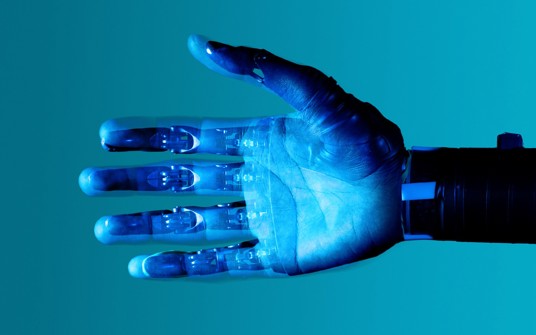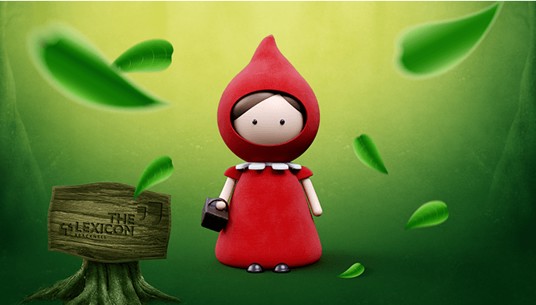The rise of the creator economy
New platforms that connect content creators directly with fans are rewriting the rules of the internet - but where does that leave brands?
The Attention Economy: If you’re not paying for a product, you are the product
In 1994 AT&T purchased the world’s first banner ad. Part of the telecoms brand’s ‘You Will’ campaign, it sat on HotWired.com and teased visitors to click-through to a landing page.
The creative might look a little dated, but that little rectangle is the direct ancestor of every digital ad that’s been served over the past thirty years, as it established a model for funding digital content that’s remained in place ever since.
Because, whilst the formats might have changed and the targeting has become smarter, the value exchange at the heart of the internet has been consistent: publishers monetise their audience’s attention by charging brands for the opportunity to interrupt the content they create. In this Attention Economy, the content itself is not the product, but the audience viewing it.
In theory, everybody wins. Internet users access huge volumes of information for free, publishers are fairly rewarded for the content they create and brands are able to reach and engage millions of consumers across the internet.
But it hasn’t quite worked out like that. Even as the size and sophistication of the ad-funded internet has exploded, there have been signs that the model behind the Attention Economy has started fraying around the edges.
Just look at the way that traditional publishers have struggled to fund their work with revenue from digital advertising, often replacing traditional newspaper journalism with click-bait headlines and polarising editorial positions that drive higher pageviews and thereby advertising revenue.
When you add that to concerns over user privacy, misinformation and political advertising scandals, the rise of ad blockers and concerns around mental health, it’s clear that society at large is not satisfied with the ad-funded status quo, either.
The real winners have been the technology companies that provide the infrastructure behind it. $325 billion was spent on digital advertising in 2019, and the great duopoly of Facebook and Google account for around 58% of it between them.
Since that first banner ad was displayed in 1994, those two companies have grown into two of the top ten most valuable companies on the planet, with Facebook valued at around $900b and Alphabet at $1.56tr
With such uneven rewards, it’s unsurprising that people have been searching for a new model for funding digital content.
Enter the Creator Economy
If, as Forbes has claimed, the Creator Economy represents ‘a paradigm shift in our digital economy’, how exactly does it work and what will it look like?
Put simply, independent creatives are using a new suite of digital platforms to charge audiences for their content, and thereby make a living from their work without chasing advertising revenue.
Artists, comedians, designers, gamers, musicians: they’re all finding new ways to share the content they produce, connect with their fans and generate new revenue streams.
This is resulting in a more democratic online creative environment in which there are fewer barriers and gatekeepers that can stop talented, entrepreneurial creators from reaching an audience and making money.
And at the heart of it are the platforms enabling the transition.
Let’s have a look at the major players.
Patreon
Founded in 2013, Patreon provides content creators with tools to run subscription services and it’s become particularly popular with podcasters, comedians and musicians. Used by more than 200,000 creators to generate revenue from more than 3 million subscribers around the world, it’s pricing and reward system make it a flexible way for patrons to make small, one-off contributions or larger regular payments to support the content they love. Patreon was recently valued at over $1bn, proving the markets see this as an important part of the future digital economy.
Substack
If Patreon is the platform of choice for artists, musicians, comedians and podcasters, then Substack is designed for writers. Launched in 2017, it provides an all-in-one tool to help writers create subscription email newsletters, including a publishing platform, payment system, analytics suite and design support. Journalists that have struggled to make a living with more established, ad-funded publishers like Rolling Stone, Vox and Buzzfeed are flocking to Substack as an alternative. With top writers earning more than $500k per year, you can see why.
Twitch
Twitch helps gamers connect with fans by providing live streaming and chat functionality to over 6.7 million streamers across the globe. As well as offering a subscription service, Twitch makes it easy for viewers to donate small, one-off micropayments through a ‘cheers’ system, that works a bit like tipping. The most popular gamers are earning millions of dollars a year through Twitch, through subscribers and one-off donations.
What this means for brands
The rate at which these new platforms have grown suggests they may seriously disrupt the way that digital marketing works, but it’s important to recognise that these are relatively immature businesses that are a long way from fulfilling their potential.
In terms of reach, they are still small compared to many traditional publishers and digital content creators, let alone broadcast media like TV or radio.
They also tend to be popular with particular segments of society. For example, Twitch’s users are overwhelmingly male and young.
But as more creators opt out of ad-funded platforms, we’re likely to see channels like Substack and Twitch grow in importance.
As that happens, some audiences may become harder to reach with traditional display or paid social advertising, meaning marketers will have to think differently about strategies for engaging with them.
So what are the options?
Partner with creators
Building partnerships with creators is one route that has obvious benefits: it’s relatively inexpensive and provides access to a ready-made audience that genuinely wants content from the creator they follow.
But it will also mean handing over control of the creative process, in terms of tone, production values and even messaging around the product.
Creators that have established a deep relationship with an audience will want to ensure everything they produce feels authentic and will be unlikely to relinquish creative control.
As strategist and expert on the Creator Economy, Zoe Scaman, makes clear, marketers who want to build partnerships with independent creators will need to work hard to find and build relationships with people they can trust.
Create your own branded content
The other route is investing more in high-quality branded content. This provides marketers with the benefit of complete control over the creative process and ensures content will always be ‘on-brand’.
But it’s really tough to make sure it delivers a positive ROI. As many brands have discovered since the content marketing boom first appeared six or seven years ago, building an audience for branded content takes expertise, budget and - most importantly - time.
Marketers considering this route need to see it as a long-term play that will build in value over time.
After all, many digital creators spend years posting daily before they’re able to build an audience - brands that want to make content marketing work for them need to have the same level of commitment, creativity and audience insight if they’re going to be successful.
If you need help navigating the changing world of digital advertising, content marketing and the creator economy get in touch - we would love to help.



